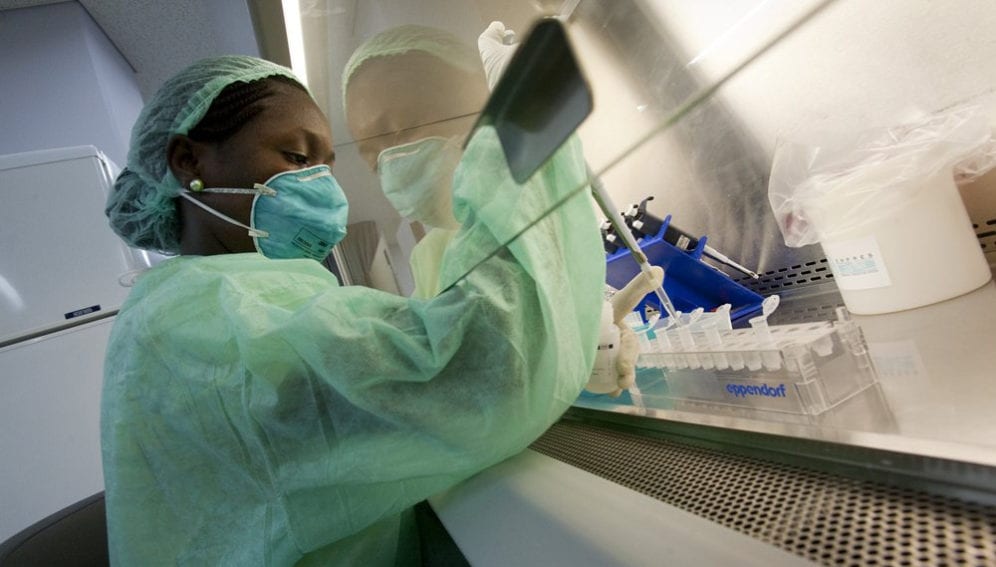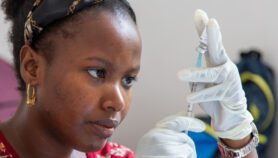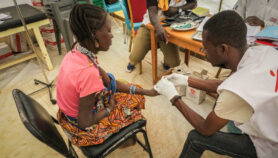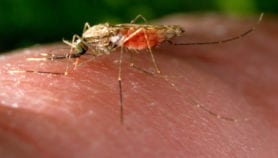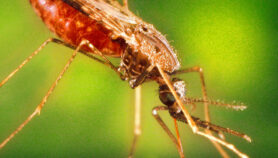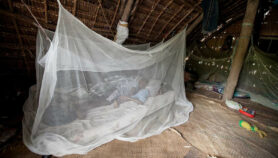By: Nick Kennedy
Send to a friend
The details you provide on this page will not be used to send unsolicited email, and will not be sold to a 3rd party. See privacy policy.
Malaria eradication programmes will fail in the face of rising drug resistance without increased funding in malaria research and development (R&D), according to two major reports published this month.
Over the next decade, malaria R&D will need as much as US$8.3 billion to overcome increasing resistance of mosquitoes to insecticides and malaria parasites to drugs, says a report funded by the PATH Malaria Vaccine Initiative (MVI), published last week (6 December).
And its authors call for more diverse sources of this malaria R&D funding — currently most of it comes from just five donors.
But the report also hails the progress made towards achieving global malaria targets, which it links to the high investment in malaria research seen over the past 20 years. In 2011, global annual funding for research was US$610 million, almost double the funds committed in 2004, the study shows.
The WHO's ‘World Malaria Report’, launched last week (11 December), also recognises progress in fighting malaria.
It found that global efforts to control and eliminate malaria have slashed incidence rates by 29 per cent globally since 2000, saving 3.3 million lives. Overall malaria mortality rates have fallen by 45 per cent over the same period, and by more than 50 per cent in under five-year-old children, the group most affected by the disease, the report says.
But the report says much more needs to be done to win the fight against malaria, including greater funding investments from a more diverse pool of donors.
Both Ashley Birkett, PATH MVI programme leader and Nick Chapman, senior analyst at the think-tank Policy Cures, which published the PATH MVI report, have raised concerns that funding for malaria R&D comes from too few sources. Almost three-quarters of funding comes from five funders, with the Bill & Melinda Gates Foundation and the US National Institutes of Health accounting for more than 45 per cent of total malaria R&D funding.
A change in the priorities of these two institutions could have a drastic effect on malaria R&D, says Birkett.
“The greatest threat to continued success in malaria control isn’t biological. It’s financial.”
Robert Newman, WHO
“It’s really important to realise we need to diversify funding sources," he says. "More agencies and governments need to step up and contribute to the fight.”
“Despite the significant gains that have been made, we’re still losing 650,000 people mostly African children under the age of five, to malaria every year," Ashley Birkett, PATH MVI programme leader, tells SciDev.Net.
"While we’ve made significant strides in the last ten years, those gains are fragile. We have evidence that the two interventions we are relying on so heavily — bednets and drugs — are starting to fail."
“We’ve got the very first vaccine against the parasite in late-stage development with very promising looking data," Birkett adds. "It’s essential that we continue to accelerate toward elimination and eradication, but that won’t be achieved without more funding. And we need more funding from more donors."
The first malaria vaccine, known as RTS,S, is in late-stage clinical trials in over 15,000 children across Africa. But a steady increase of up to US$250 million every year is needed to achieve the aims of the WHO’s Malaria Vaccine Technology Roadmap — to have vaccines that can reduce malaria cases by 75 per cent, and that are capable of eliminating malaria, licensed by 2030 — the report says.
The WHO report also found that funding for malaria programmes in 2012 was less than half the US$5.1 billion required to achieve universal access to interventions.
In addition, the report shows that annual growth in international funding has slowed to four per cent since 2009, compared with the annual increases of more than 40 per cent seen between 2005 and 2009.
Robert Newman, director of the WHO Global Malaria Control Programme, said at the launch of the report: “The greatest threat to continued success in malaria control isn’t biological. It’s financial. This report shows that the control efforts work, that we can dramatically reduce malaria, but we don’t have enough resources to assure universal access for everyone — and that’s a tragedy.”
Birkett says tackling malaria relies on “layering” different interventions, such as drugs, bednets and rapid diagnostic tests.
And Chapman says: “We’d like to see public funders increase funding for product development as well as early stage research. And there are clear funding gaps in the less well-funded areas of vector control and diagnostics R&D that need to be addressed.”
> Link to PATH MVI’s report
> Link to WHO World Malaria Report 2013


